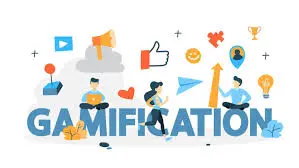In recent years, gamification has emerged as a powerful tool in the educational landscape, transforming traditional learning environments into engaging and interactive experiences. Gamification in Education: By incorporating game-like elements into educational settings, educators can significantly enhance student motivation, participation, and overall learning outcomes. In this blog post, we will explore the concept of gamification in education, its benefits, and practical strategies for implementation.
What is Gamification?
Gamification refers to the integration of game design elements in non-game contexts, such as education, to motivate and engage users. This approach leverages elements like points, badges, leaderboards, challenges, and rewards to create a more dynamic and enjoyable learning experience. By tapping into the natural human desire for competition, achievement, and recognition, gamification can transform mundane tasks into exciting challenges.
Benefits of Gamification in Education
- Increased Engagement: Gamification captures students’ attention and keeps them engaged in the learning process. By introducing elements of fun and competition, students are more likely to participate actively in their education.
- Enhanced Motivation: The use of rewards and recognition can boost intrinsic motivation. When students see their progress through points or badges, they are encouraged to set and achieve personal goals.
- Immediate Feedback: Gamified learning environments often provide instant feedback, allowing students to understand their performance in real-time. This immediate response helps learners identify areas for improvement and fosters a growth mindset.
- Collaboration and Social Interaction: Many gamified platforms encourage collaboration among students, promoting teamwork and communication skills. This social aspect can create a sense of community and belonging in the classroom.
- Personalized Learning: Gamification allows for differentiated instruction, enabling students to progress at their own pace. This personalized approach caters to diverse learning styles and needs.
Practical Strategies for Implementing Gamification
- Incorporate Game Elements: Start by integrating simple game mechanics into your lessons. Use points systems, badges, and leaderboards to track student progress and achievements.
- Create Challenges and Quests: Design learning activities as challenges or quests that students must complete. This can include problem-solving tasks, group projects, or interactive simulations.
- Use Educational Games: Incorporate existing educational games or platforms that align with your curriculum. Tools like Kahoot!, Quizizz, and Classcraft offer engaging ways to assess student knowledge while making learning fun.
- Foster a Growth Mindset: Encourage students to view challenges as opportunities for growth. Celebrate their efforts and progress, regardless of the outcome, to build resilience and a love for learning.
- Solicit Student Feedback: Involve students in the gamification process by seeking their input on game elements and activities. This collaboration can increase buy-in and make the learning experience more relevant to their interests.
Conclusion
Gamification in education is more than just a trend; it is a powerful approach to enhancing student motivation and engagement. By incorporating game design elements into the learning process, educators can create dynamic and interactive environments that foster a love for learning. As we continue to explore innovative teaching methods, gamification stands out as a promising strategy to inspire and motivate students in their educational journeys.
Key Takeaways
- Gamification enhances student motivation and engagement through game-like elements.
- Benefits include increased participation, immediate feedback, and personalized learning experiences.
- Practical strategies for implementation include incorporating game mechanics, creating challenges, and using educational games.
By embracing gamification, educators can unlock the potential of their students, making learning an exciting adventure rather than a chore. As we move forward in the digital age, the integration of gamification in education will undoubtedly play a crucial role in shaping the future of learning.
